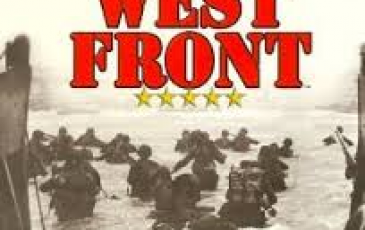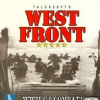| Rating: |
8.21 (7) |
| Games Played: |
9 |
| SM: |
10 |
| Turns: |
55 |
| Type: |
Custom |
| First Side: |
Allies |
| Second Side: |
Axis |
| Downloads: |
765 |
"Omaha" was the code name for the second beach from the right of the five landing areas of the Normandy Invasion. It was the largest of the assault areas, stretching over 10 kilometres between Port-en-Bessin on the east and the mouth of the Vire River on the west. The western third of the beach was backed by a 10-foot- (3-metre-) high seawall, and the whole beach was overlooked by cliffs 100 feet high. There were five exits from the sand and shingle beach; the best was a paved road in a ravine leading to the village of Vierville-sur-Mer, two were only dirt paths, and two were dirt roads leading to the villages of Colleville-sur-Mer and Saint-Laurent-sur-Mer. The Germans under Field Marshal Erwin Rommel had built formidable defenses to protect this enclosed battlefield. The waters and beach were heavily mined, and there were 12 strong points called Widerstandsnester ("resistance nests"). Numerous other fighting positions dotted the area, supported by an extensive trench system. The defending forces consisted of three battalions of the veteran 352nd Infantry Division. Their weapons were fixed to cover the beach with grazing enfilade fire as well as plunging fire from the cliffs. Omaha was a killing zone. It was part of the invasion area assigned to the U.S. 1st Army, under Lieutenant General Omar Bradley. The beach was to be assaulted by the U.S. 1st Infantry Division, with the 116th Regiment of the 29th Division attached for D-Day only. On their right flank, a separate mission of unusual difficulty was assigned to a special assault force (2nd Ranger Btn.). At Pointe du Hoc, four miles west of Omaha Beach, a Coastal battery of six 155-mm howitzers was one of the most dangerous element in the German coastal defenses of the assault area. The objectives of the 1st Division were ambitious. First, it was to capture the villages of Vierville, Saint-Laurent, and Colleville; then it was to push through and cut the Bayeux-Isigny road, and then it was to attack south toward Trévières and west toward the Pointe du Hoc. Throughout the landing, German gunners poured deadly fire into the ranks of the invading Americans. Bodies lay on the beach or floated in the water. Men sought refuge behind beach obstacles, pondering the deadly sprint across the beach to the seawall, which offered some safety at the base of the cliff. Destroyed craft and vehicles littered the water's edge and beach. The troops on the beach were left on their own and realized that the exits were not the way off. Slowly, and in small groups, they scaled the cliffs. By nightfall the 1st and 29th divisions held positions around Vierville, Saint-Laurent, and Colleville nowhere near the planned objectives, but they had a toe-hold.

































